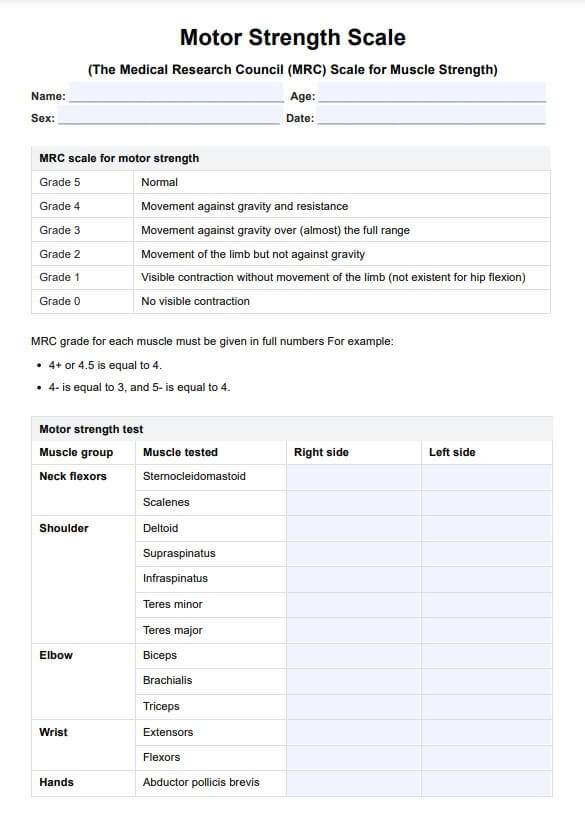Motor strength is typically graded using the Medical Research Council (MRC) Scales that assesses muscle contraction and the ability to move a muscle against resistance. This muscle strength grading system ranges from 0 to 5.

Motor Strength Scale
Access a free Motor Strength Scale based on the Medical Research Council scale. Download a free PDF to use for your assessments.
Motor Strength Scale Template
Commonly asked questions
3/5 motor strength means the muscle can move through its full range of motion against gravity but cannot resist additional pressure. This level indicates that the muscle has some strength but is not fully functional.
Normal motor strength is graded as 5/5, which means the muscle has full strength, allowing for complete range of motion and resistance against full force. When evaluating muscle strength, it's important to assess key muscles and muscle groups to determine the functional capacity of specific spinal nerve roots and their associated muscle contraction.
EHR and practice management software
Get started for free
*No credit card required
Free
$0/usd
Unlimited clients
Telehealth
1GB of storage
Client portal text
Automated billing and online payments











